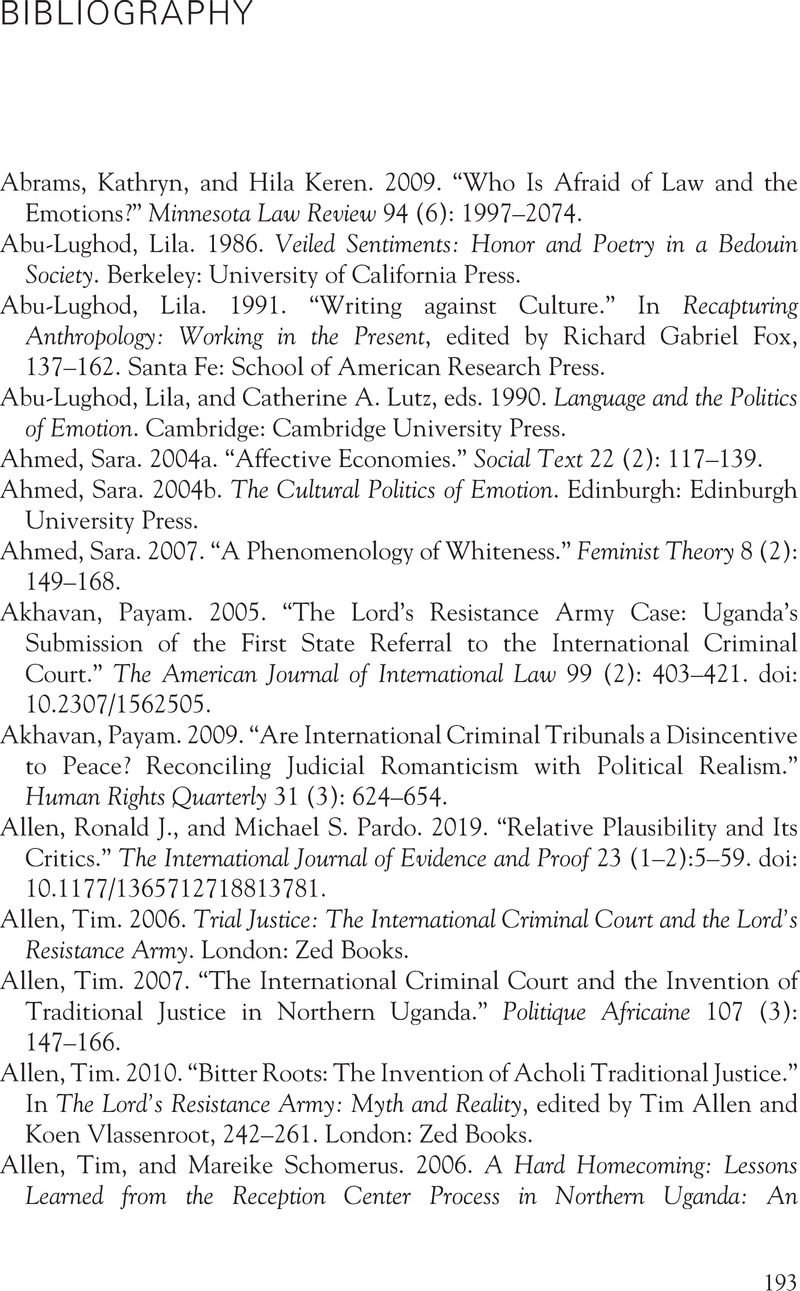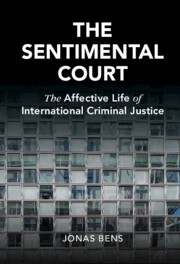Book contents
- The Sentimental Court
- Cambridge Studies in Law and Society
- The Sentimental Court
- Copyright page
- Contents
- Figures
- Maps
- Acknowledgments
- Abbreviations
- Maps
- Introduction
- Part I Atmospheres
- Part II Sentiments
- Part III Politics
- Epilogue
- Notes
- Bibliography
- Index
- Cambridge Studies in Law and Society
- Plate Section (PDF Only)
- References
Bibliography
Published online by Cambridge University Press: 05 May 2022
- The Sentimental Court
- Cambridge Studies in Law and Society
- The Sentimental Court
- Copyright page
- Contents
- Figures
- Maps
- Acknowledgments
- Abbreviations
- Maps
- Introduction
- Part I Atmospheres
- Part II Sentiments
- Part III Politics
- Epilogue
- Notes
- Bibliography
- Index
- Cambridge Studies in Law and Society
- Plate Section (PDF Only)
- References
Summary

- Type
- Chapter
- Information
- The Sentimental CourtThe Affective Life of International Criminal Justice, pp. 193 - 223Publisher: Cambridge University PressPrint publication year: 2022



